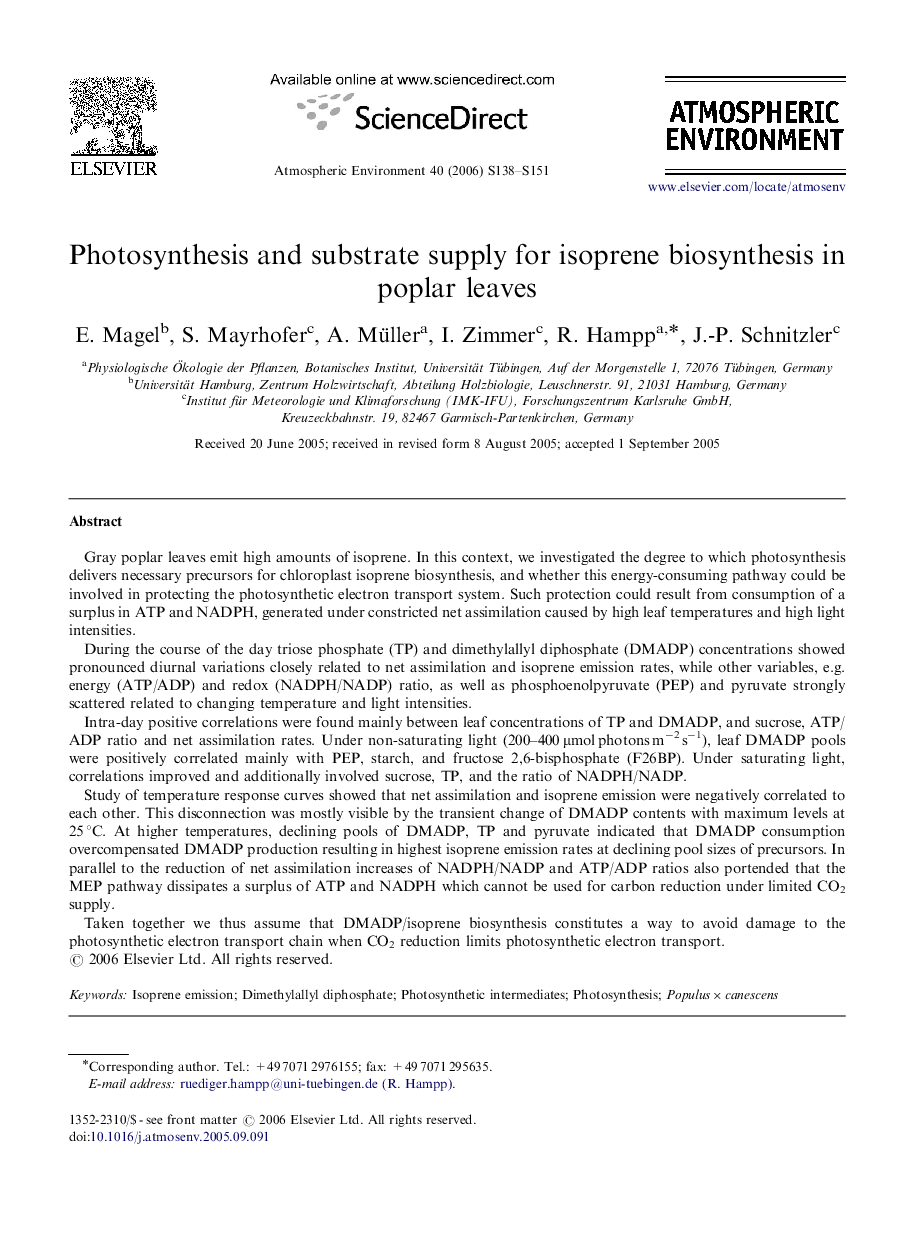| کد مقاله | کد نشریه | سال انتشار | مقاله انگلیسی | نسخه تمام متن |
|---|---|---|---|---|
| 4443898 | 1311214 | 2006 | 14 صفحه PDF | دانلود رایگان |

Gray poplar leaves emit high amounts of isoprene. In this context, we investigated the degree to which photosynthesis delivers necessary precursors for chloroplast isoprene biosynthesis, and whether this energy-consuming pathway could be involved in protecting the photosynthetic electron transport system. Such protection could result from consumption of a surplus in ATP and NADPH, generated under constricted net assimilation caused by high leaf temperatures and high light intensities.During the course of the day triose phosphate (TP) and dimethylallyl diphosphate (DMADP) concentrations showed pronounced diurnal variations closely related to net assimilation and isoprene emission rates, while other variables, e.g. energy (ATP/ADP) and redox (NADPH/NADP) ratio, as well as phosphoenolpyruvate (PEP) and pyruvate strongly scattered related to changing temperature and light intensities.Intra-day positive correlations were found mainly between leaf concentrations of TP and DMADP, and sucrose, ATP/ADP ratio and net assimilation rates. Under non-saturating light (200–400 μmol photons m−2 s−1), leaf DMADP pools were positively correlated mainly with PEP, starch, and fructose 2,6-bisphosphate (F26BP). Under saturating light, correlations improved and additionally involved sucrose, TP, and the ratio of NADPH/NADP.Study of temperature response curves showed that net assimilation and isoprene emission were negatively correlated to each other. This disconnection was mostly visible by the transient change of DMADP contents with maximum levels at 25 °C. At higher temperatures, declining pools of DMADP, TP and pyruvate indicated that DMADP consumption overcompensated DMADP production resulting in highest isoprene emission rates at declining pool sizes of precursors. In parallel to the reduction of net assimilation increases of NADPH/NADP and ATP/ADP ratios also portended that the MEP pathway dissipates a surplus of ATP and NADPH which cannot be used for carbon reduction under limited CO2 supply.Taken together we thus assume that DMADP/isoprene biosynthesis constitutes a way to avoid damage to the photosynthetic electron transport chain when CO2 reduction limits photosynthetic electron transport.
Journal: Atmospheric Environment - Volume 40, Supplement 1, 2006, Pages 138–151